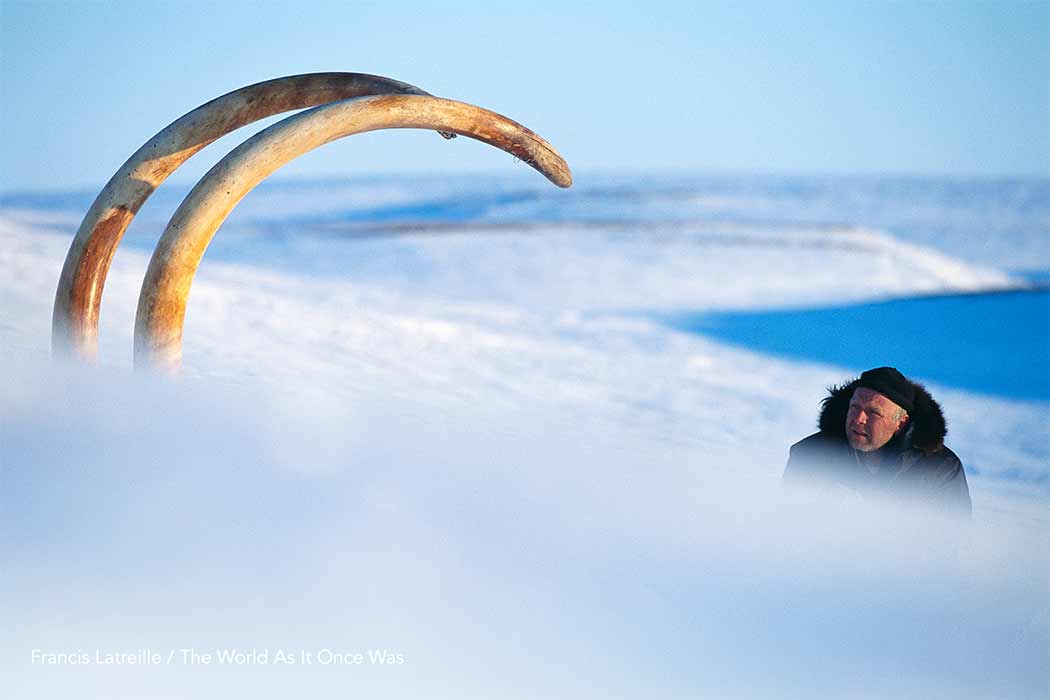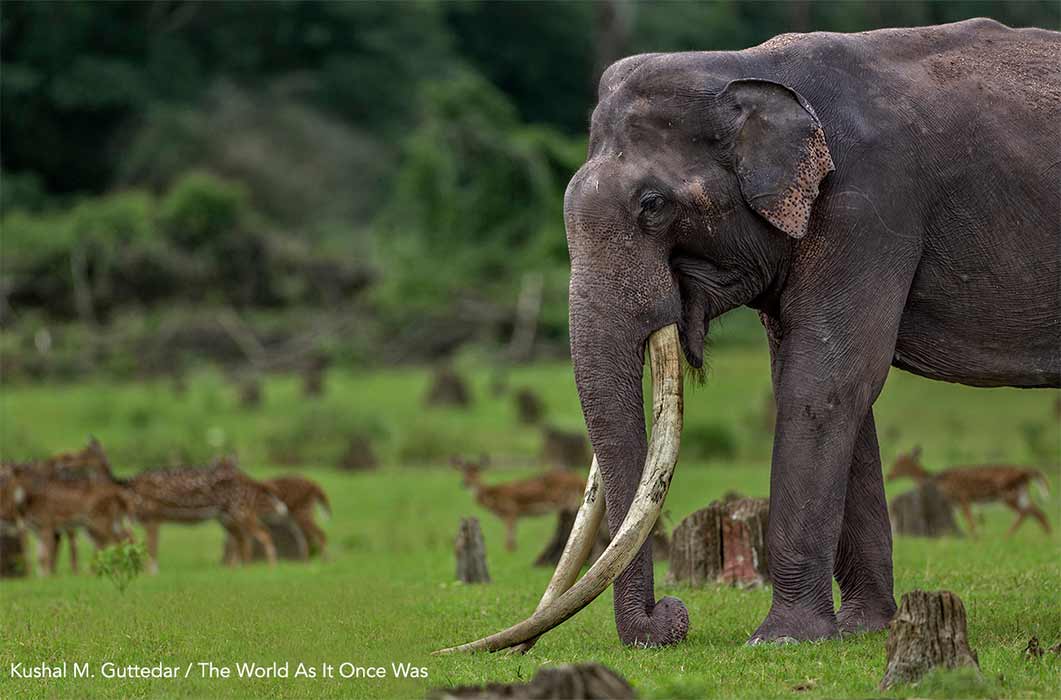
The World As It Once Was: The Shifting Baseline In Iconic Megafauna
Centuries of trophy and commercial hunting, isolation in captivity and poaching, have caused a baseline shift in the perception of iconic megafauna such as Asian and African elephants, which should actually be benchmarked with their species of 3500 and 150 years ago, respectively. The shifting baseline syndrome can be defined as “a gradual change in the accepted norms for the condition of the natural environment due to a lack of human experience, memory and/or knowledge of its past condition”. Indeed, in his famous Proboscidea monograph (1936), Henry Osborn depicts African elephants with very big ivory, in the same league with prehistoric stars, while Asian elephants sport average ivory, showing that 100 years ago the image of the Asian elephants was already severely damaged by the constant elimination of tuskers.

A plough-the-earth bull Asian elephant known as Bogeshwar in the wilds of Kabini, India. (Kushal M Guttedar / ©The World As It Once Was)
Last of the Plough-The-Earth Tuskers
For Asian elephants, isolation in captivity was the chief cause of elimination of the big tuskers and tuskers in general. The ancient Arthashastra writings from over 2000 years ago prescribed the selective catching from the wild of 20-year-old tusked males, which were preferred to females or maknas (tuskless bulls). About 100 to 150 years ago, big-tusked Asian bulls appear in photos and drawings from all across Asia, including Burma, Cambodia, India, Thailand and Vietnam. They were used in parades, beauty contests and Colosseum-style fights.

An Asian elephant engraving in the ancient Vat Phou temple site, Laos shows an elephant with ivory as big as that of the woolly mammoths painted on the walls of the European caves. (GuillaumeG / CC BY-SA 3.0)
In the case of African elephants, trophy and commercial hunting thoroughly contributed to the elimination of the big tuskers, and captivity played only a minor role, in the case of the forest elephants exploited in the Belgian Congo. Ivory of one million African elephants passed through the Ivory House in London, and similar numbers ended up in places such as the United States and Germany. Many big tusks feature in those archive images: their measurements were never recorded, they were just transformed into piano keys, combs and billiard balls.
Research indicates evidence of over 50 plough-the-earth Asian elephants (and many more approaching that stature). Taking into account that the Asian elephant population can be estimated as one tenth of the African elephant numbers, this is the equivalent of 500 African big tuskers. Evidence also records about 160 African elephants with at least one tusk over 60kg (130 lbs), which is heavy even for mammoth standards, and hundreds of others still ‘plough-the-earth’ with ivory still over 40-45kg (88 – 100 lbs) per side. Now, putting that into the perspective of 200,000 years of woolly mammoths, one can easily understand how Mother Nature initially and originally designed the said elephant species.
What happened to elephants is the common story of all ‘trophy’ megafauna. The same sad story is true for giant moose, bighorn sheep, bears or lions: the size of ‘trophy’ individuals diminished over time, as champions were systematically targeted, leaving the losers to do the mating. Female billfish known as ‘granders’ were exterminated by oil barons and adventures like Hemingway; big horned female rhinos were killed together with their calves by Austrian and German hunters in the 1880s. The list of examples is extremely long and painful, on most continents.
So, the true reference points for all these charismatic species should not be the population roaming the earth today, after some 150 years of increased trophy hunting, but rather a period long before.




